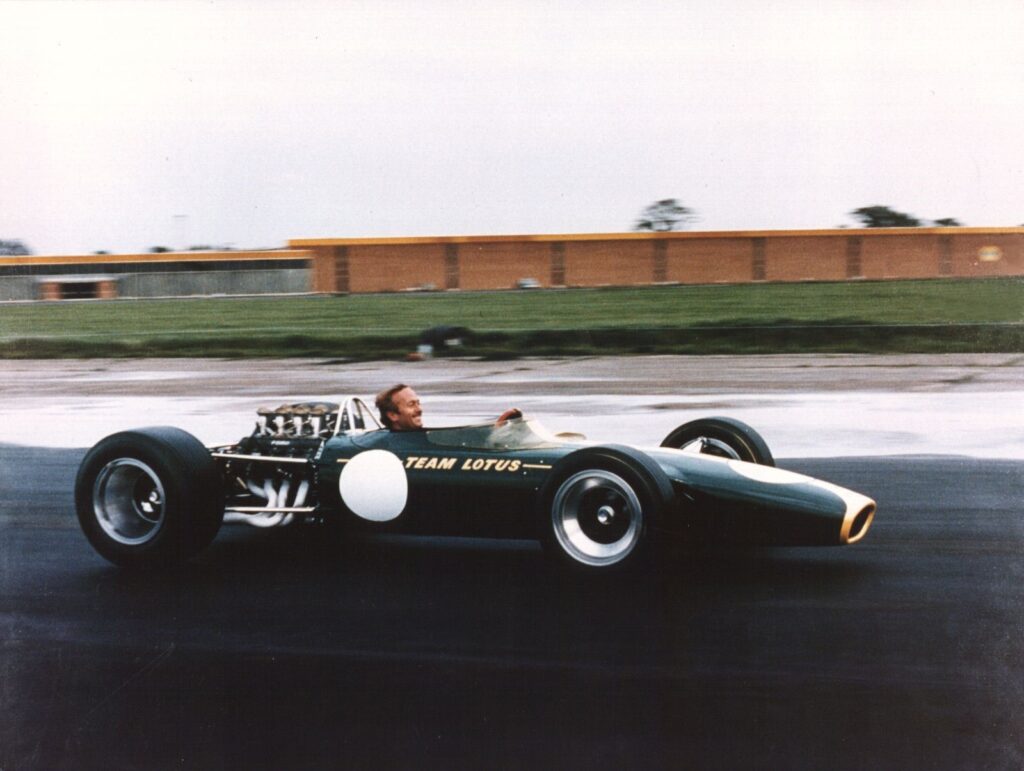In celebration of 75 years of Formula One competition, the Barber Vintage Motorsports Museum has embarked on its most ambitious automotive project to date, the meticulous recreation of Lotus Type 49 chassis No. 1.
One of the most important racing machines of all time, the Type 49/R1 was an extraordinary collaboration between four of the greatest minds in F1 history: Colin Chapman and Maurice Philippe of Team Lotus, and Mike Costin and Keith Duckworth of Cosworth.
The museum has amassed the largest collection of Lotus race cars in the world, anchored by the 1961 Type 21. Founder George Barber is a passionate advocate for Chapman’s innovative achievements, with the Type 49 representing the Englishman’s finest work.
Aiming to make the most of F1’s 1966 move to 3.0-liter engines, Chapman contacted ex-Team Lotus engineers Costin and Duckworth, who founded Cosworth in 1958. Chapman secured funding from Ford, and the “Double Four Valve” Cosworth V-eight was born.
Philippe was tasked with designing a monocoque chassis with a frontal area to match that of the fully stressed Ford power plant, which was secured to the lightweight chassis using just four bolts. This combination was truly unique for its time.
The completed car was revealed to the press on May 23, 1967, at the Lotus Cars test track in Hethel, England. Chapman himself drove the Type 49/R1 on that special day, along with Graham Hill, the only person to have achieved the triple crown of F1 world champion, Indianapolis 500 winner, and 24 Hours of Le Mans winner.
Twelve days later, Hill earned pole position for the Dutch Grand Prix at Zandvoort. The 1962 F1 world champion lapped the 2.642-mile circuit 3.5 seconds quicker than the leading time one year earlier. Jim Clark, driving the Type 49/R1’s sister car, won the race.
In all, the Type 49/R1 contested 10 GPs, with victories in the hands of two-time world champ Clark at the 1967 Mexican GP and Hill at the ’68 Spanish GP. The latter triumph proved to be the foundation for Hill’s second F1 title.
Unfortunately, 49/R1 was severely damaged in an accident at the 1968 Monaco GP. By then, the car had been modified and repainted in Gold Leaf Team Lotus colors. The damaged monocoque was used to construct 49/R9, which was written off during the ’69 season.
Barber has commissioned Classic Team Lotus, headed by Chapman’s son, Clive, to recreate the Type 49/R1 using the original design drawings and incorporating period components for a fitting 60th-anniversary celebration of this visionary machine.
The Type 49/R1 will be reproduced exactly as Chapman drove it in 1967 at Hethel. George Barber and Clive Chapman anticipate re-enacting that famous occasion, after which the car will be shipped to Birmingham.
Before the recreated machine takes pride of place in the museum among its Lotus stablemates, enthusiasts from around the world will be invited to Barber Motorsports Park to experience firsthand the sights and sounds of one of the greatest F1 cars of all time as it circulates the 17-turn, 2.38-mile road course.
“The Chapman family and Classic Team Lotus recognize the Barber Vintage Motorsports Museum as being a spectacular center of motorsports, both historic and modern,” said Clive Chapman. “We are constantly grateful for George Barber having chosen to celebrate Lotus by creating the world’s largest collection of the marque, consisting of some of the most important examples, several of which are unique.
“In 2024, the Lotus 49 was awarded ‘Race Car of the Century’ by the renowned Motor Sport magazine. The 49/R1 realized the greatest leap in speed in F1 history. Each of the nine Type 49s were distinctive, and we are delighted to have been entrusted by the museum to recreate this famous F1 car down to the finest period detail.
“We are spurred on by the prospect of the product of our endeavors taking a place at the museum,” added Chapman, “where she can be appreciated by such a large and appreciative audience of motorsports enthusiasts.”
“This isn’t a restoration, it’s a resurrection of one of the greatest racing machines ever built, guided by the very hands that carry on Colin Chapman’s legacy,” said George Barber, founder of the Barber Vintage Motorsports Museum. “Working with Clive on this project is profoundly meaningful. It honors a friendship rooted in mutual respect and a shared passion for innovation, and I can’t wait to see this remarkable car take its rightful place in our collection.”

